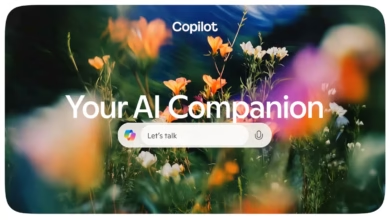AI Spots Customer Hesitation & Boosts Sales

▼ Summary
– Hesitation moments during online shopping, like doubting product fit or compatibility, cost businesses millions by causing cart abandonment.
– AI helps marketers identify and address hesitation patterns, optimizing micro-moments where attention converts to action, such as hovering over a “buy” button.
– Retailers like Lululemon use AI-powered segmentation and dynamic messaging to reduce hesitation, resulting in higher conversion rates and lower acquisition costs.
– B2B companies leverage AI to detect concerns like integration risks, triggering personalized responses like ROI calculators or case studies to build confidence.
– Strategies to reduce hesitation include identifying friction points, creating confidence-building content, deploying AI-driven behavioral triggers, and continuously testing optimizations.
Online shoppers often abandon carts at the last moment due to unanswered questions and lingering doubts. This hesitation costs businesses millions in lost revenue annually. While brands excel at driving traffic, the real challenge lies in converting that attention into action during critical decision-making moments.
Modern marketers now leverage AI-powered behavioral analysis to identify and address these hesitation patterns. Research shows 78% of companies use AI in business operations, yet few apply it effectively during the crucial seconds when potential customers decide whether to complete a purchase.
Why Hesitation Happens
Shoppers frequently encounter uncertainty just before buying:
- Product fit concerns (“Will these shoes work for wide feet?”)
- Compatibility questions (“Does this software integrate with our current tools?”)
- Trust gaps (“Is this brand reliable for important purchases?”)
Behavioral science calls this “ambiguity aversion”, the natural tendency to avoid uncertain outcomes. AI now detects these hesitation signals, allowing brands to intervene with precision.
How Leading Brands Reduce Hesitation
Retail: Solving Size Uncertainty
- Real customer photos with height/weight details
- Instant access to sizing experts
- Long-term fit reviews showing how items held up
The result? 22% fewer returns and a 37% conversion lift.
Lululemon’s AI-Driven Personalization
- Customized ads for new vs. returning customers
- Real-time hesitation tracking to refine campaigns
- Automated adjustments in Performance Max ads
This approach reduced acquisition costs, increased new customer revenue by 9%, and boosted ad ROI by 8%.
B2B: Tackling Enterprise Doubts
- Integration risks (“Will this disrupt our systems?”)
- ROI proof (“How do I justify this to executives?”)
- Implementation concerns (“What if onboarding fails?”)
AI identifies these patterns, like repeated visits to pricing pages or competitor comparisons, and triggers tailored responses:
- Custom ROI calculators
- Case studies from similar companies
- Direct access to technical specialists
Turning Hesitation into Confidence
- Heatmaps reveal where users pause (e.g., hovering over compatibility details).
- Session recordings show repeated price-tier comparisons before exit.
- Sales logs highlight frequent questions like “How long does setup take?”
- Side-by-side comparisons with competitors
- “Who This Isn’t For” sections to enhance transparency
- Customer quotes addressing specific concerns
- Dynamic content (e.g., showing team-plan testimonials after pricing page hesitation).
- AI-driven chat prompts (“Need help calculating ROI?”).
- Targeted offers (“Still deciding? Here’s 10% off.”).
- Start with one underperforming campaign (e.g., demo sign-ups).
- Experiment with AI-generated ad variations (e.g., emphasizing security vs. speed).
- Scale winning tactics across other channels.
The Future of Conversion Optimization
AI moves beyond automation to anticipate and resolve uncertainty in real time. Microsoft’s data shows AI-powered ads achieve 25% higher relevance, while 40% of users say well-placed AI enhancements improve their experience.
The key takeaway? Traffic means little without trust. By addressing hesitation the moment it arises, brands can close the gap between interest and action—turning fleeting attention into lasting revenue.
(Source: Search Engine Journal)






